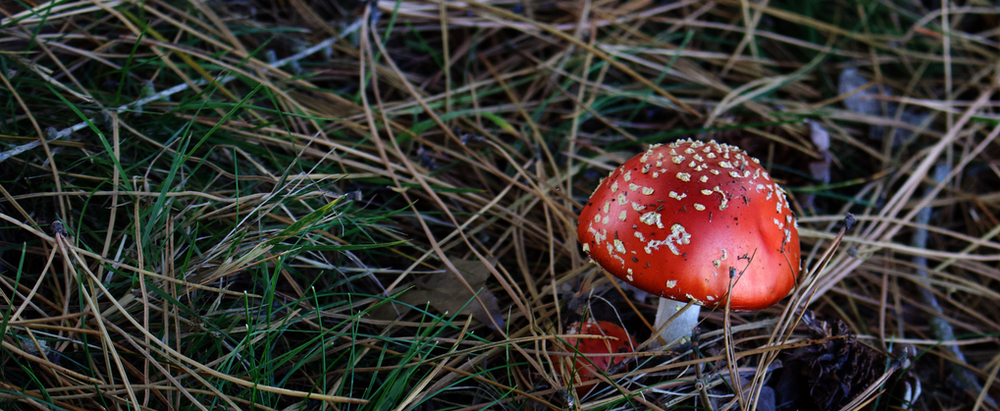
Seed Saving And Storage In Autumn 2025
Hello friends,
Recently I finally got around to sorting out the last of my seed saving efforts for autumn.
First up I sorted out the pumpkin and tomato seeds I had drying on paper towels. It didn't take too long to clean up, package and label my Baby Bear, Grey Crown, and Kakai pumpkin varieties, along with my Island Bay Tomato seeds.



Next up was dealing with all the flower seeds drying in the garage. I had two different stashes of Calendula officinalis seeds, a mixed container of seeds from various Calendula plants around the garden, and one container with seeds from the Calendula Strawberry Blonde variety I had growing. It didn't take very long to sieve them using my soil sifter, which I use for seed clean up.


I then sifted my Nigella, Love in the Mist, seeds I collected from various plants in the front garden.

And I also cleaned up and then stored mixed Cosmos seeds I collected from all the Cosmos varieties I grew over the summer. The seed sifter's multiple sieves came in handy, as there was quite a bit of flower bits in the mix.


In my seed clean up session I also found packets of Zinnia, Sulpur Cosmos, and Sweet Peas I had collected earlier in the autumn, but had not had a chance to store away yet.

With all that organising done, it was time to stow all the seeds away for the winter. I now have three matching seed storage containers, with one each for vegetable seeds, flower seeds, and herb and dye plant seeds. It didn't take very long at all to store all the seeds away in their appropriate containers. These containers make it so much easier to store the seeds, and then pull them out in smaller sections for seed sowing.



With that big job done, there's nothing more to do until the seed catalogues come out in the coming months, when I need to go through each box and check if I need to replace any seeds I wish to grow next spring.
Have a wonderful day
Julie-Ann
Want to discuss my post? Feel free to chat with me on Instagram or Mastodon or Bluesky.
Weaving Study Project - Colour and Weave Gamp Tea Towels
Hello friends,
Today I thought I'd share with you a set of tea towels that I made as part of my weaving studies with the Jane Stafford School of Weaving. I'm currently making my way through Season 2 of Jane's course work, which looks at colour and design in weaving. These tea towels are part of the Season 2 Episode 4 Colour and Weave sample, which shows what colour patterns look like with dark and light repeats on a plain basic weave.
My loom is an Ashford 8 shaft jack floor loom, which I bought just over a year ago, and it's been amazing and easy to weave on.

First up we have the full colour and weave sample. The warp is threaded with patterns of dark (D) vs light (L) colours in blocks, for example DLDL or DDL, and each are separated by a small yellow stripe of plain weave, in seven blocks. The weft is then woven in the same pattern as the warp, to give squarish colour blocks, which end up showing a large number of different patterns within one tea towel sample. It's a great way to get a large number of samples in a small amount of space. You can then isolate each block to see which patterns you might be interested in using for a bigger project.


After doing the sampler, I had plenty of warp left over to try longer samples of the patterns I was interested in from the first sample.




In the end I was able to make 5 full length tea towels, which I then scanned using our printer/scanner so that I had copies of each sample before the tea towels went into the wash.



Each of the tea towels, apart from the first full sampler, will be used in the kitchen as tea towels, which is great because we were running low on them. But the first full sampler stays in my weaving folder as a reference weaving sample. I have since labelled both the warp and the weft for easy referencing of each colour block. I plan to use some of the patterns for future work projects for my business Hearth & Oak, where I weave and sew textiles to sell in my online store.

I'm very pleased with this section of work, and now it's time to move onto the next block of course work.


I love learning new techniques in weaving, and Jane Stafford's School of Weaving is a great way to do this at a good price that I can afford. If you are looking to learn to weave, or upgrade your skills, I recommend checking it out.
Have a wonderful day
Julie-Ann
Want to discuss my post? Feel free to chat with me on Instagram or Mastodon or Bluesky.
Knitting the Gro Hat By Fiber Tales
Hello friends,
I have a knitting project start and finish to show you today. Ever since I finished my latest blanket some months ago, I've been procrastinating over which knitting project to do/finish next.
I've got a pair of socks, and also a set of leg warmers on the go, but I wasn't feeling like working on them while it was so warm outside. And then I wasn't happy with my socks so I frogged them, and then procrastinated some more about knitting the yarn up with a different sock pattern..
But then while I was cleaning up my craft room I found a knitting project bag with 100 grams of DK weight possum/merino yarn that I'd hand dyed a sage green for a knitting project with the pattern Gro Hat by Fiber Tales. I instantly fell back in love with the project, especially the leaf pattern around the hat, and started knitting the pattern.
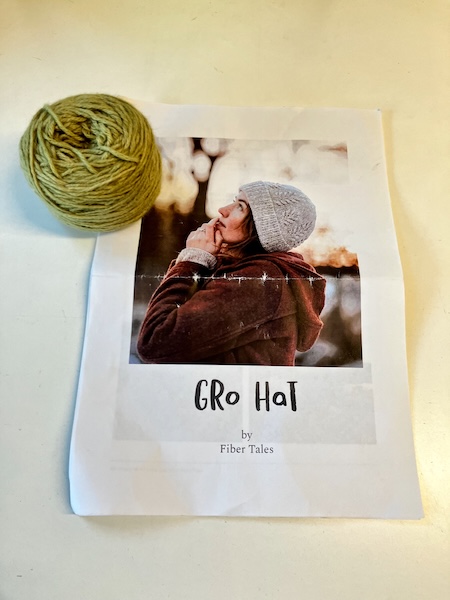
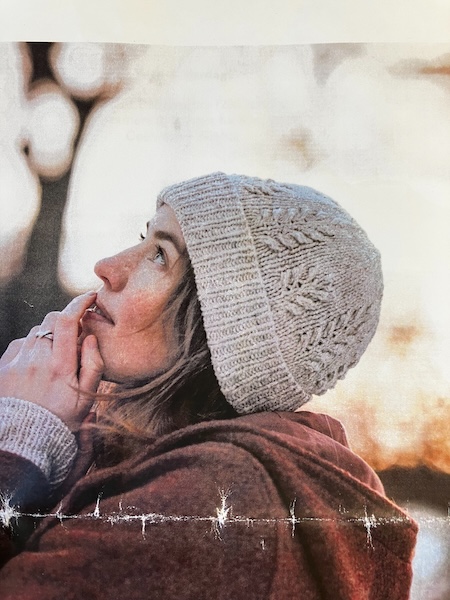
First up I needed to learn a new cast on method for the edge of the hat, Italian Tubular cast on, which ended up being similar to other cast on methods I've learned, so that was okay. Then I knitted the ribbing at the bottom of the hat, which folded over at the end. After that was switching needles to a bigger size, and plain knitting for a while. All that was relatively easy.
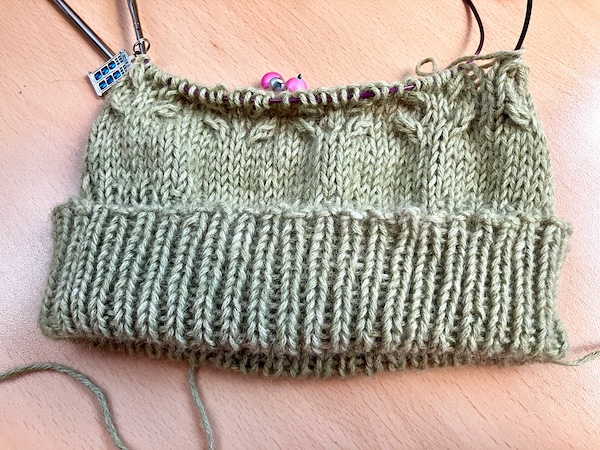
After that came all the hard parts, and at this stage I wish I had put in a safety line before the cable and lace section, as it would've made the pattern knitting way less stressful. My advice to anyone considering this pattern would be to do the following in the cable and lace sections: put in a safety line at the start, put stitch markers and the beginning of each repeated section, so it's easy to frog back to a section in a row if necessary. And the last thing I would suggest is to knit the k1yok1 repeats much looser than you think, because if that repeat is too tight, it makes it super hard to do the cables in the next row.
Once the tricky part of the cables and lace work is done, the rest of the hat is pretty easy to knit until the finish. I have done both cables and lace work in knitting before, but this pattern was tricky for me to do. Just a thing to note is that this pattern has only one size, and you can't upscale it or downscale it easily without ruining the repeats.
And here is the finished Gro Hat knitted up before blocking, as you can see, you can see the stitches between the DPNs, are slightly wider vertical rows. It was unfortunate, but I hoped it would come out in blocking.
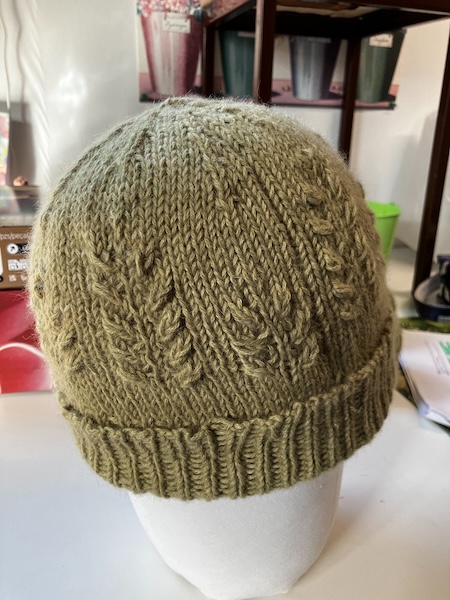
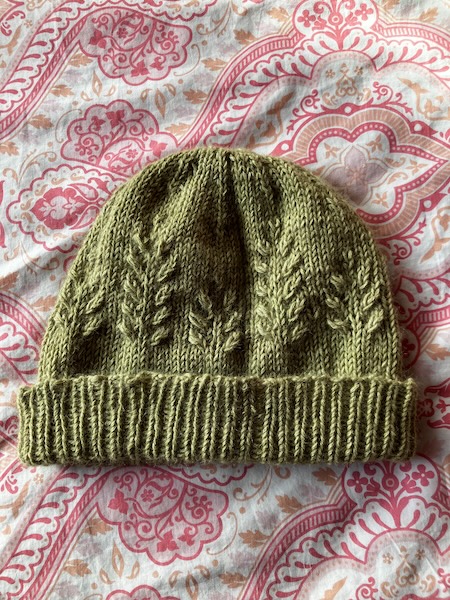
I gave the hat a nice and long soaking in luke warm water and wool wash, and then blocked the hat using a head mannequin covered in a plastic bag.
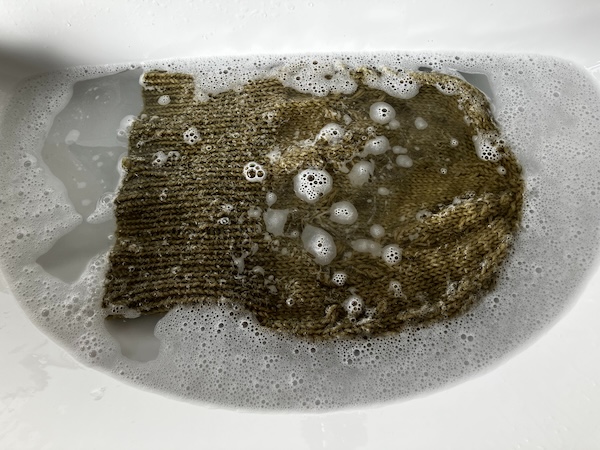
And here is the finished hat.
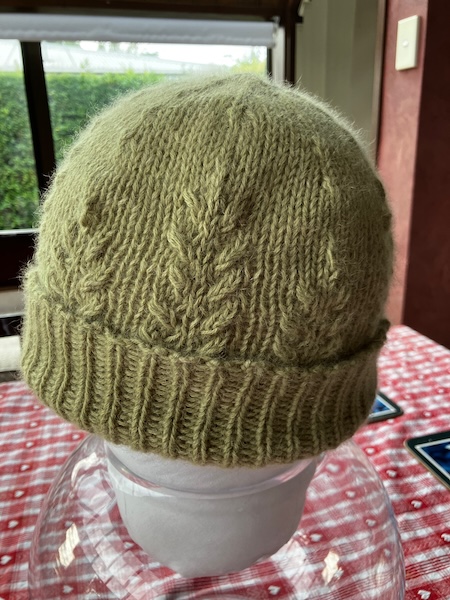
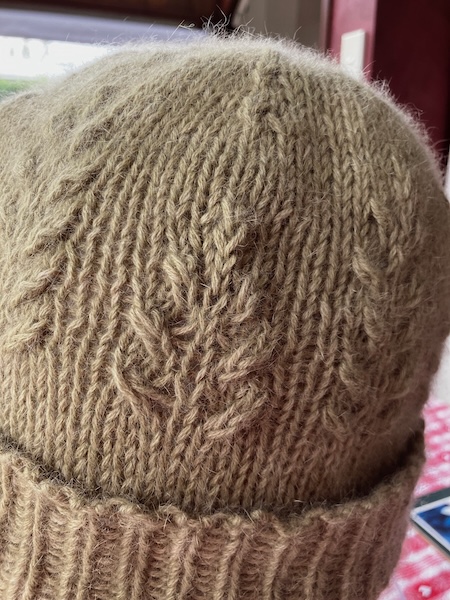
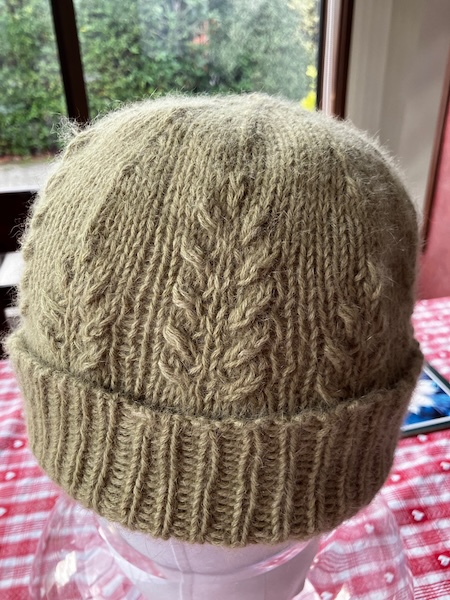
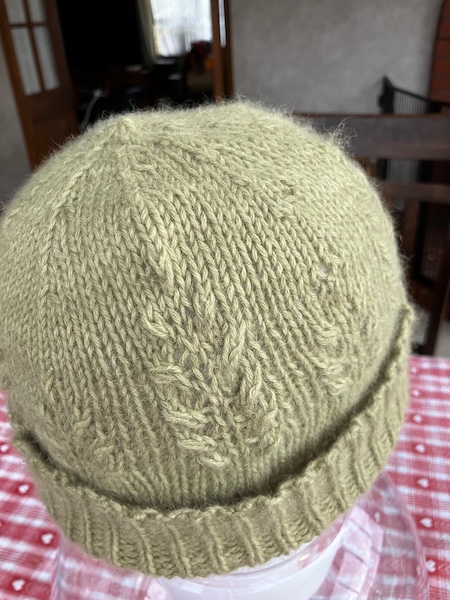
I absolutely love the finished hat, and especially in the sage colour, as it just really matches so well with the leaves. I'm glad that I stuck it out and finished the hat despite the trickiness of the cable and lace section. I think the pattern is totally worth knitting but it's good to be aware of the trickiness. I can't wait to wear this hat all winter long.
Have a wonderful day
Julie-Ann
Want to discuss my post? Feel free to chat with me on Instagram or Mastodon or Bluesky.
Random Farm's Tilda and Biscuit Fleece Project - Washing and Storing
Hello friends,
Yes, I went and bought two more raw fleeces, but in my defense, it was only 500 grams of fleece each. I saw a social media post from Random Farm in April announcing the release of their raw fleeces after they'd been taken to the 2025 National Black and Coloured Sheep Breeders Association Competition. After searching through the photos of their fleeces available, I was really tempted by two raw fleeces, from the sheep Tilda and Biscuit, so I bought 500 grams of each of them.
First up we have Tilda the sheep, who is a silver grey pure-bred Romney, with fleece of 34 microns across and a staple length of 13 cm. Her fleece came second in the Strong Handcraft Fleece section at the National Black and Coloured Sheep Breeders Association Competition in 2025.
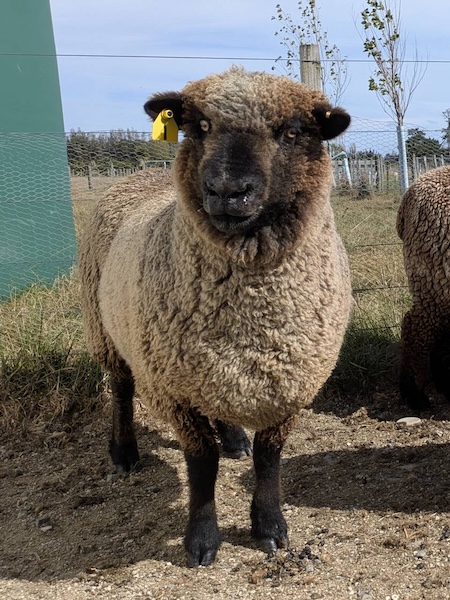
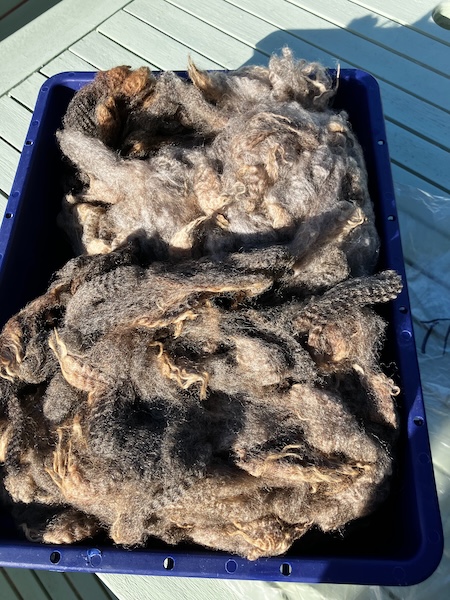
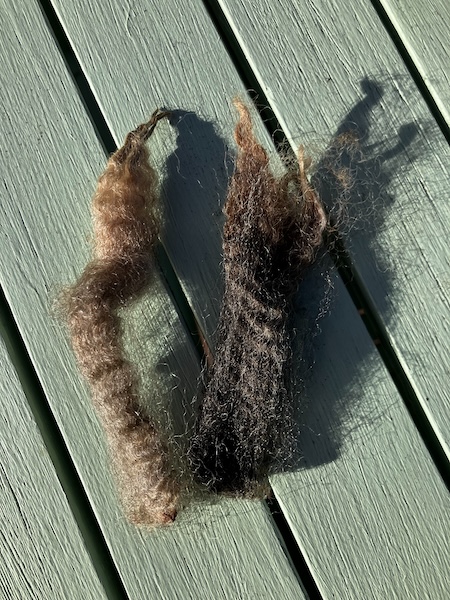
With her fleece I scoured it using my previous method of scouring wool using Unicorn Scour Power, but this time I used a new drying method.

Usually I put scoured fleeces into plastic trays to dry while outside, but I have the problem of fleece trying to blow away in high winds, and also when I bring it inside Missy and Rosie cats think of them as warm and fluffy cat beds. I saw a social media post a while ago of someone using a foldable fish drying mesh rack to dry fleeces and yarn, so I was interested in buying one, and I eventually found it on Temu after I couldn't find any for sale locally in New Zealand. I opted for the four tier rack with zip closures as it gave me many options for drying fleece, fibre, and yarn. It also folds down into a very small space for storage.
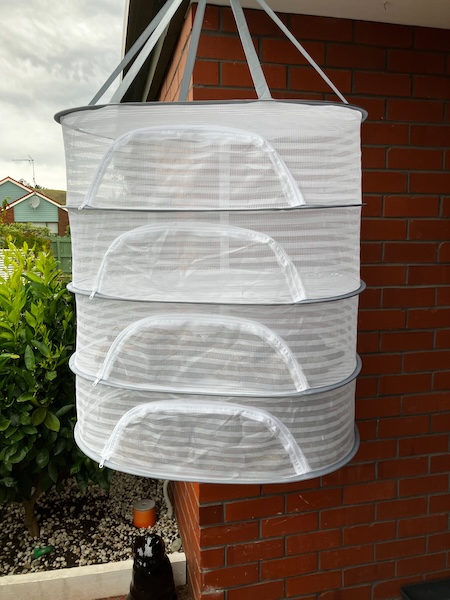
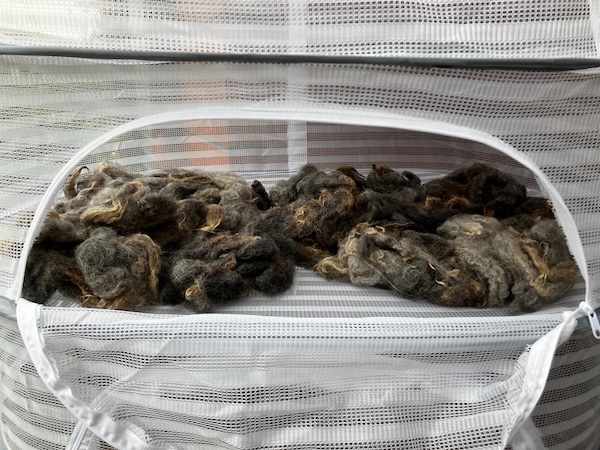
And the new system works great for both outside the house, and also for hanging inside near the fireplace on cold nights. It didn't take very long at all to dry, hung up safe from both winds and cats. A quick flick carding of Tilda's dried fleece shows a nice clean and long staple with great crimp in the fleece.
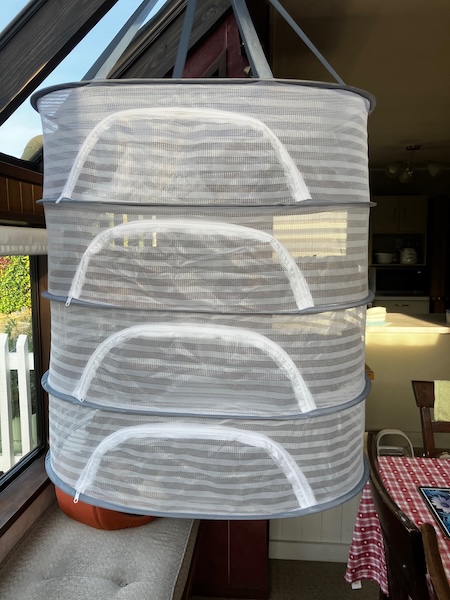
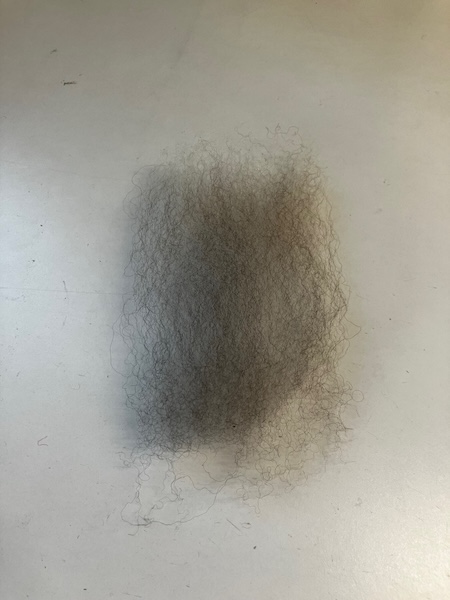
Biscuit the sheep is a silvery-grey romney/corriedale fleece, with romney lustre and corriedale softness. Her fleece was shorn when she was 18 months old, so this is her two-tooth fleece, at 31 microns and a staple length of 14 cm. Biscuit's fleece came 4th in the Mature Strong Handcraft Fleece section at the National Black and Coloured Sheep Breeders Association Competition in 2025.
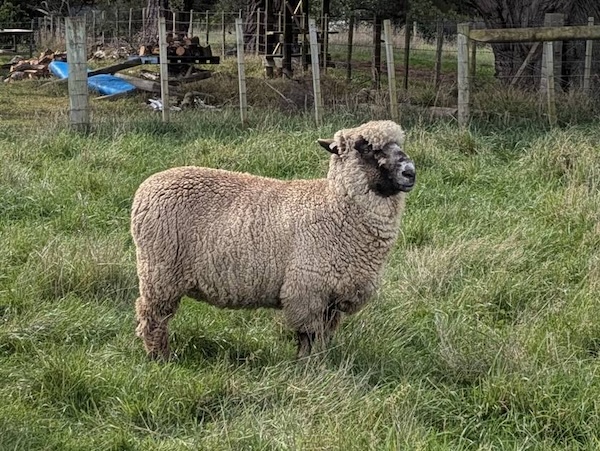
Random Farm suggests spinning this fleece semi-worsted/worsted style, which require wool combs to align all the fleece in the same direction. I have actually have a set of wool combs ordered from Majacraft, but I'm waiting for them to arrive so I can try this method of fleece preparation.
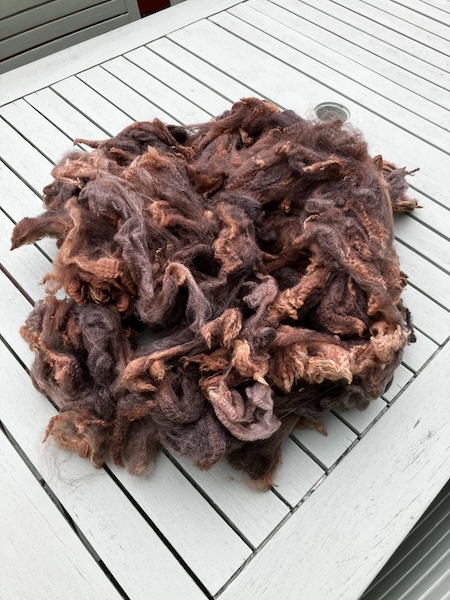
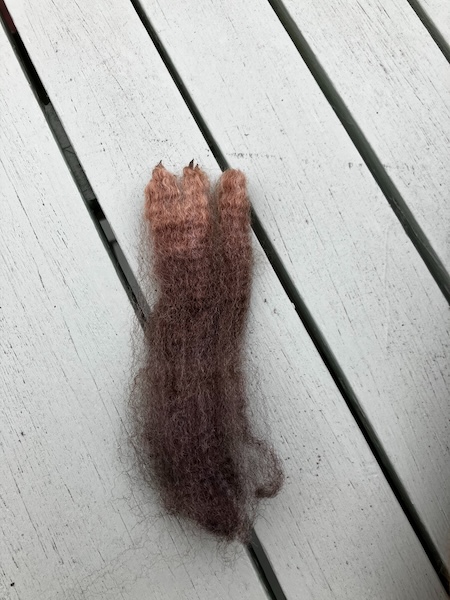
When dried I flick carded a lock of Biscuit's scoured and washed fleece, and it turned out just beautiful, with two toned colours on a long staple. I'm looking forward to using my new wool combs with this fleece when they arrive.
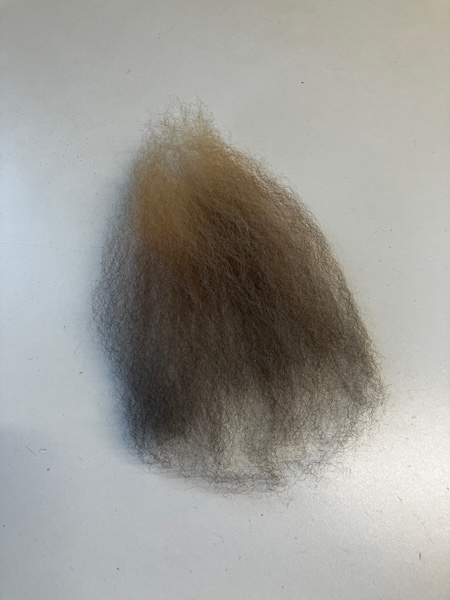
With four scoured and clean fleeces now in storage, I will not buying any more fleece for quite a while. The next step for all these fleeces is to process them for spinning, by either drum carding them, or using my wool combs.
And I just wanted to say a big thank you to Random Farm, who gave me permission to use their photos of Tilda and Biscuit the sheep in this blog post. Please check out Random Farm's Facebook and Felt pages to see all their lovely fleece available.
There won't be a blog post next Thursday, as I'm having cataract surgery on my left eye next Wednesday. I am planning on posting a blog a week after that if all goes to plan.
Have a wonderful day.
Julie-Ann
Want to discuss my post? Feel free to chat with me on Instagram or Mastodon or Bluesky.
Planting Garlic and Shallots
Hello friends,
A couple of weeks ago I was finally able to get all my garlic and shallot bulbs into the ground. I've been meaning to for a while, but first I had to weed, and then dig over the vege garden bed they were to go into.
Once hubby and I did the hard work of weeding and digging the vege garden bed one Saturday afternoon, I pulled out my trusty bulb planter, and got to work first planting out six shallot bulbs that I had picked up from our local garden centre. I haven't planted shallots before, so this is a small experiment to see if they were worth doing so in the coming years.



Once they were in the ground, I planted out a couple of bulbs of Printanor garlic I also purchased from our local garden center. I've grown these for years, but I've had some problems with garlic rust with this variety each December.

Next up were the garlic varieties I bought from Bulbs Direct. I've wanted to try new varieties to see if they were more resistant to garlic rust, and I was also interested in how they tasted. I planted a bulb of Creole garlic, which is supposed to taste very intense and much more firey than other garlic varieties. Creole garlic has beautiful red/burgundy cloves when the bulb is broken up for planting.



And the last garlic variety to plant was Fire which was also from Bulbs Direct. Fire garlic is supposed to form large bulbs and have a fierce spicy taste.


And now with all that planting done, my garlic and shallot bulbs are in the ground for the next 6 - 7 months. I hope come the end of December, there is a large harvest for me to dig up.
Have a wonderful day
Julie-Ann
Want to discuss my post? Feel free to chat with me on Instagram or Mastodon or Bluesky.




